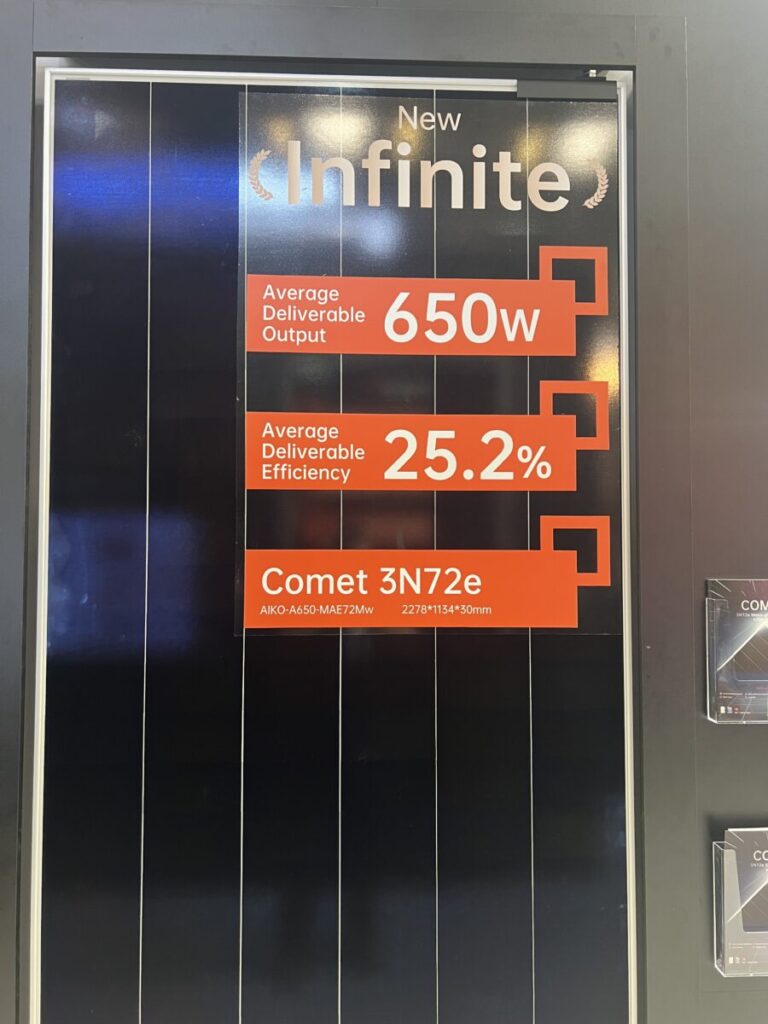The Chinese back-contact module manufacturer said its new products rely on the company’s all-back-contact (ABC) cell technology and have a temperature coefficient of -0.26% per C.
At Intersolar Munich 2024, Chinese solar cell and module manufacturer Aiko Solar showed off its Generation 3 Comet series of solar panels with a world record energy conversion efficiency of 25.2%.
“The new products rely on our patented all-back-contact (ABC) solar cell technology,” says Claudio Godinho, Europe Service Director at Aiko Solar. pv magazine at the company’s stand in Munich. “The Comet Generation 3 solar panel will be available in the fourth quarter of 2024. The module will be manufactured at their 10 GW and 14 GW facilities.”
Godinho noted that the modules only use copper in their solar cell connections on the back. The company said they can use copper, which typically requires thicker rails, in part because they moved those connections to the back of the module.
Five versions of the new module series will be available, with output power from 625 W to 650 W and efficiency from 24.2% to 25.2%. The no-load voltage is between 54.49 V and 54.99 V and the short-circuit current is between 14.60 A and 15.00 A. It has a size of 2,278 mm x 1,134 mm x 30 mm and a weight of 27 kg.
All products are built with 3.2mm tempered anti-reflective glass and aluminum frames. They also have an IP68 housing and a maximum system voltage is 1,500 V. The panels have a temperature coefficient of -0.26%/C and an operating temperature ranging from -40 C to 85 C.
Aiko Solar offers a 30-year performance guarantee, with an alleged 1% degradation in the first year and a guaranteed final power of no less than 88.85% of nominal power after 30 years.
The module is equipped with solar cells that overlap each other by approximately 0.3 mm. This reportedly generates more electricity within the same area, adding about 0.5% more solar-facing silicon. By moving all string connectors – the ABC technology – to the back of the module, the light absorption surface is increased by 1.1%, according to the manufacturer.
Aiko says that approximately 93.5% of the surface of the solar module consists of solar cells. Moving the solar cell connections to the back of the solar panel reduces the dual-sidedness of the product by up to 70%. The contacts on the back also give the module advantages in partial shade situations.
This content is copyrighted and may not be reused. If you would like to collaborate with us and reuse some of our content, please contact: editors@pv-magazine.com.


